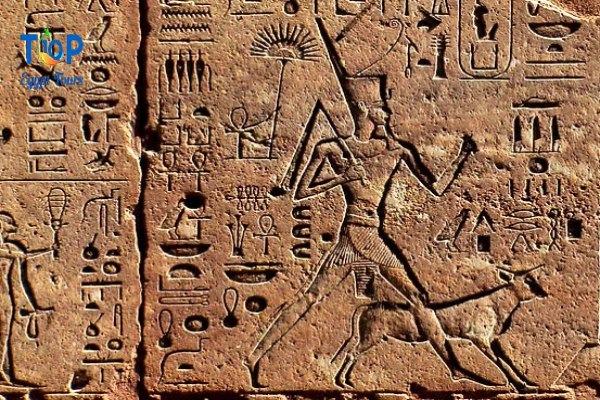Sed festival ancient Egypt, Welcome to the enchanting world of Egypt, where ancient history and vibrant culture come together to create a tapestry of awe-inspiring experiences. In this installment of our Ancient Egyptian Festivals and Rituals series, we delve into the mystical and regal celebration known as the Sed Festival. Join Top Ten Egypt Tours as we unravel the significance and splendor of this age-old tradition that marked the renewal of a Pharaoh’s power and the prosperity of the kingdom.
The Feast of Sed or the Feast of the Tail was an ancient Egyptian celebration that celebrated the Pharaoh’s continued sovereignty over Egypt.
It is very likely that the celebration of Sid Day is an ancient tradition, because it is believed that royal authority was originally only given to the Pharaoh for a period of thirty years, at the end of which he was deposed or killed. Therefore, it is believed that Eid al-Sadr was nothing but a brutal custom that has remained to us from the legacy of ancient times. But it took on a more humane character than it had before. Instead of deposing the Pharaoh, after thirty years had passed, he appeared as a new king of Upper and Lower Egypt. With this artificial renewal, a new force was emanating within him, with which he could begin a new era.
Although this celebration is ancient and there are hundreds of references to it throughout the history of ancient Egypt, the most detailed records of the celebrations—aside from the reign of Amenhotep III—come mostly from a relief of the Fifth Dynasty king Neuserre in the Temple of the Sun at Abu Ghurab in eastern Karnak. Another relief from the Twenty-Second Dynasty king Osorkon II at Tell Basta.
This ancient ceremony was probably created to replace the ritual killing of a pharaoh unable to continue to rule effectively due to his age or state of health. Ultimately, it was a jubilee celebration after the pharaoh continued to rule for thirty years and then every three to four years after that. It was held primarily to replenish the Pharaoh’s strength and stamina and to celebrate his continued success.
There is clear evidence that the early pharaohs celebrated this holiday, such as the First Dynasty Pharaoh Den and the Third Dynasty Pharaoh Djoser. In the Pyramid of Djoser, two boundary stones in the court of Sayyid, located within his pyramid complex, show the celebration of this holiday.
Many pharaohs deviated from this tradition, especially the Eighteenth Dynasty pharaohs, Hatshepsut and Akhenaten.
The Rituals Sed festival ancient Egypt:
The Coronation Pavilion:
The Sed Festival typically began with the construction of a ceremonial pavilion where the Pharaoh would undergo the ritual of Heb-Sed. This pavilion symbolized the king’s ascent to the throne and was adorned with elaborate decorations, reflecting the grandeur of the occasion.
The Ritual Run:
A central element of the Sed Festival was the Pharaoh’s symbolic race, where he would run a course representing the unification of Upper and Lower Egypt. This act showcased the ruler’s agility and endurance, signifying his readiness to lead the kingdom for another prosperous era.
Offerings and Ceremonies:
Elaborate offerings and ceremonies were conducted to honor the deities and seek their blessings for the Pharaoh’s continued reign. Priests, dignitaries, and the general populace participated in these rituals, fostering a sense of unity and divine support for the ruler.
Symbolism and Spiritual Renewal:
The Sed Festival carried profound symbolism. It represented the Pharaoh’s regeneration, likening him to the god Osiris, who underwent death and rebirth. The renewal of the Pharaoh’s power was seen as essential for maintaining cosmic order (maat) and ensuring the well-being of the kingdom.
Celebrating the Sed Festival Today:
While the Sed Festival is a relic of ancient times, its spirit lives on in modern Egypt. Visitors to this captivating land can explore archaeological sites, museums, and monuments that bear witness to the grandeur of this ancient ceremony. Top Ten Egypt Tours invites you to discover the allure of the Sed Festival and immerse yourself in the rich tapestry of Egyptian history.
The Sed Festival stands as a testament to the deep spiritual and cultural roots of ancient Egypt. It reflects the Egyptians’ profound understanding of the cyclical nature of power, renewal, and the symbiotic relationship between the Pharaoh and the divine. Join us in our journey through the Ancient Egyptian Festivals and Rituals series as we continue to unveil the captivating traditions that have shaped this extraordinary civilization.



Comment (0)